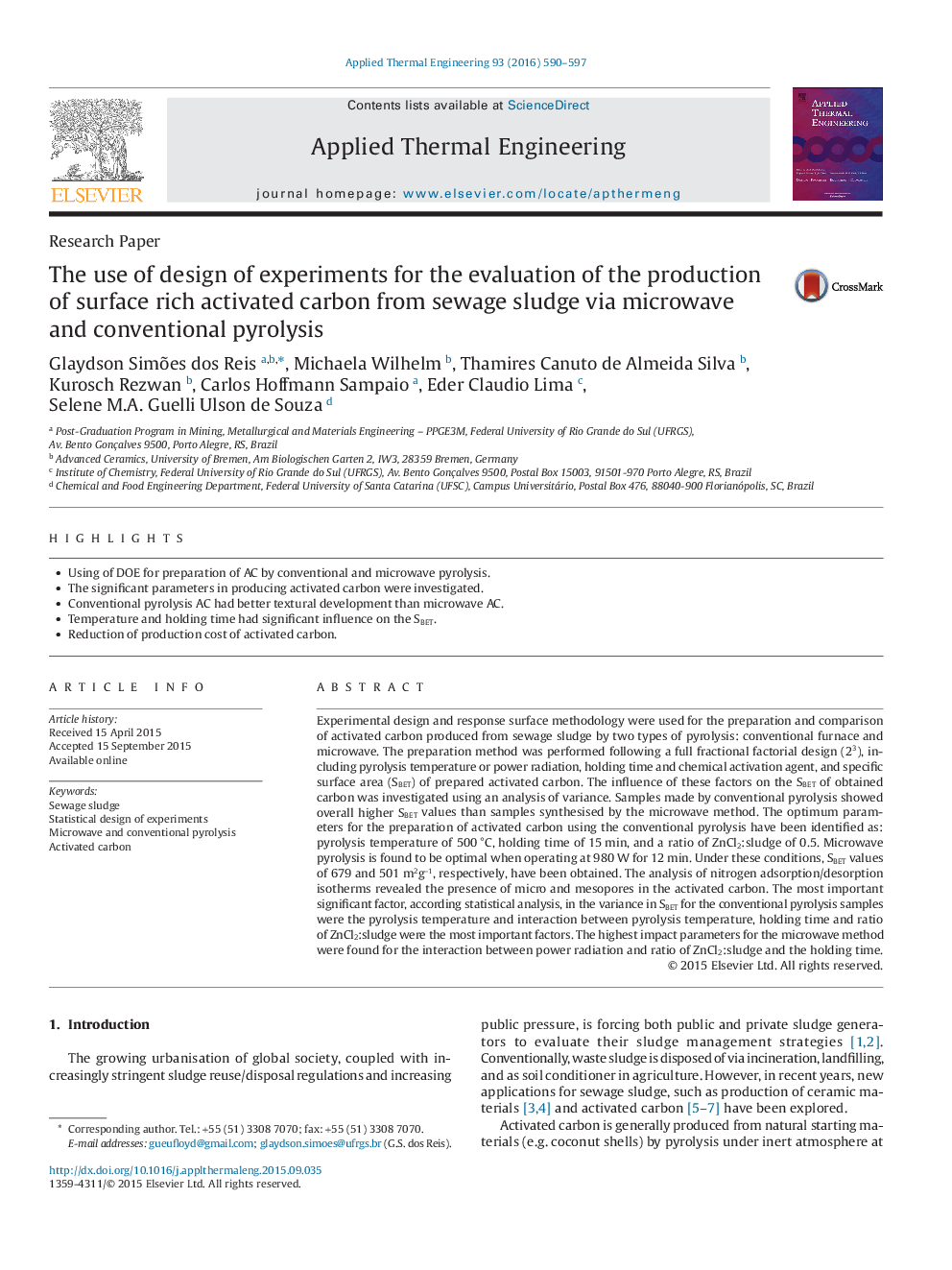| Article ID | Journal | Published Year | Pages | File Type |
|---|---|---|---|---|
| 7048767 | Applied Thermal Engineering | 2016 | 8 Pages |
Abstract
Experimental design and response surface methodology were used for the preparation and comparison of activated carbon produced from sewage sludge by two types of pyrolysis: conventional furnace and microwave. The preparation method was performed following a full fractional factorial design (23), including pyrolysis temperature or power radiation, holding time and chemical activation agent, and specific surface area (SBET) of prepared activated carbon. The influence of these factors on the SBET of obtained carbon was investigated using an analysis of variance. Samples made by conventional pyrolysis showed overall higher SBET values than samples synthesised by the microwave method. The optimum parameters for the preparation of activated carbon using the conventional pyrolysis have been identified as: pyrolysis temperature of 500â°C, holding time of 15âmin, and a ratio of ZnCl2:sludge of 0.5. Microwave pyrolysis is found to be optimal when operating at 980âW for 12âmin. Under these conditions, SBET values of 679 and 501âm2gâ1, respectively, have been obtained. The analysis of nitrogen adsorption/desorption isotherms revealed the presence of micro and mesopores in the activated carbon. The most important significant factor, according statistical analysis, in the variance in SBET for the conventional pyrolysis samples were the pyrolysis temperature and interaction between pyrolysis temperature, holding time and ratio of ZnCl2:sludge were the most important factors. The highest impact parameters for the microwave method were found for the interaction between power radiation and ratio of ZnCl2:sludge and the holding time.
Related Topics
Physical Sciences and Engineering
Chemical Engineering
Fluid Flow and Transfer Processes
Authors
Glaydson Simões dos Reis, Michaela Wilhelm, Thamires Canuto de Almeida Silva, Kurosch Rezwan, Carlos Hoffmann Sampaio, Eder Claudio Lima, Selene M.A. Guelli Ulson de Souza,
